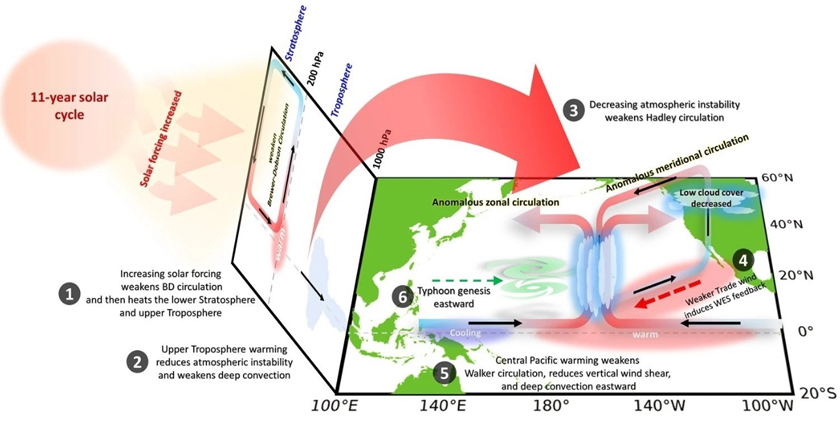
Per- and polyfluoroalkyl substances (PFAS) are a group of contaminants of emerging concern that have been drawing numerous attention in recent years. Since the 1940s, PFAS have been widely used in industrial and commerci...
More

Per- and polyfluoroalkyl substances (PFAS) are a group of contaminants of emerging concern that have been drawing numerous attention in recent years. Since the 1940s, PFAS have been widely used in industrial and commerci...
More
In the western North Pacific, typhoons typically occur from May to October, when atmospheric and oceanic conditions such as wind shear and sea surface temperatures (SSTs) are favorable for typhoon formation. However, Sup...
More
The wind-driven meridional overturning circulation between the tropical and subtropical oceans is important for regulating decadal-scale temperature fluctuations in the Pacific Ocean and globally. An acceleration of the ...
More
Viruses are thought responsible for c.a. 10~50% of the total bacterial mortality in surface seawater. The viral shunt hypothesis suggested that the viral-lysis process lessened the transfer of bacterial cells to protozoa...
More
The West Boundary Current of the northwest Pacific i.e. Kuroshio Current - impacts our climate, economy, culture, and history by the heat and momentum it carries. Under the premise of establishing a marine country, we ha...
More
The ocean absorbs about 30% of anthropogenic CO2 annually! The cycling of CO2 absorbed by the ocean (Blue carbon) is mainly regulated by two processes, physical pump (or solubility pump) and biological pump. Physical pum...
More
The supply of iron (Fe) to the euphotic zone plays an critical role on regulating the biogeochemical cycling of material in the ocean. In addition to nitrogen and phosphorus, Fe is one of the most important limiting fact...
More
The mixed layer, the thin, nearly isopycnic surface layer, is a distinct and important sub-environment in world’s oceans. It separates the atmosphere from the deep ocean, and thus, modulates, if not regulates to a ...
More
The time-series typed study in aquatic ecosystems has been recognized as one of the most effective tools to explore long-term environment/ecosystem changes (A). Since 2004, a time-series type watershed biogeochemical obs...
More